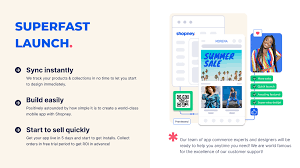
What is shopify?
Shopify is a comprehensive e-commerce platform that enables individuals and businesses to create online stores to sell products and services. It offers user-friendly tools for website customization, payment processing, inventory management, and marketing, making it an ideal choice for both beginners and experienced entrepreneurs. With features like SEO optimization, mobile responsiveness, and integration with various sales channels, Shopify supports businesses of all sizes in reaching a global audience. Its app ecosystem extends functionality, allowing store owners to add advanced features like drop shipping, analytics, and customer service tools, making Shopify a versatile solution for online retail success.
Table of Content:
1:Set Up Your Shopify Account.
- Customize Your Store
- Add Sales Channels
- Set Up Product Listings
- Set Up Payments
- Set Up Legal Policies
- Set Up Shipping Settings
- Optimize Your Store for SEO
- Manage Customer Service and Orders
- Track and optimize performance
2:How to use Shopify for dropshipping.

1:Set Up Your Shopify Account:
Setting up a Shopify store for dropshipping involves several steps, from creating your store to choosing the right products and suppliers. Here’s a comprehensive guide to help you get started:

(1) Set up your Shopify account:
Sign up:
Visit the Shopify website and sign up for a free trial by entering your email, password, and store name.
Choose a plan:
Shopify offers several pricing plans. Start with the Basic plan, which is usually enough for new
Dropshipping stores.
You can upgrade later as your business grows.
(2):Customize your store:
Choose a theme:
Visit the Shopify Theme Store and choose a theme that fits your brand. You can start with a free theme like “Debut” or “Brooklyn”. Paid themes offer more customization options.
Customize your theme:
Use the Shopify editor to customize your theme. Add your logo, adjust colors, and customize the layout to reflect your brand identity.
Add Pages:
Create important pages like Home, About Us, Contact Us, Shipping & Returns, Privacy Policy, and Terms of Service.
Set up navigation:
Organize your store’s menu by adding links to key pages and collections to ensure easy navigation for customers.
(3):Create product listings:
Use dropshipping apps:
Install a dropshipping app like Oberlo, Dsers, or Spocket from the Shopify app store. These apps help you import products from suppliers directly into your Shopify store.
Add products:
Use the app of your choice to find products from suppliers like AliExpress, CJdropshipping, or other wholesale suppliers. Import products to your store with all necessary details such as images, specifications and prices.
Edit Product Details:
Customize product titles, details and images to make them unique. Make sure your listings are SEO friendly to attract organic traffic.

(4):Set up payments.
Choose payment gateways:
Go to the Payments section in Shopify Settings to configure payment options. Shopify Payments, PayPal, and Stripe are popular choices.
Set up currency:
Choose your store currency based on your target market.
(5):Set up shipping settings:
Configure shipping rates:
Go to Shipping & Delivery Settings in Shopify and set shipping rates. You can offer free shipping, a flat rate, or a rate based on the supplier’s costs.
Define Shipping Zones:
Set up different shipping zones to specify where you ship and applicable rates.
(6):Establish legal policies:
Create store policies:
Set your privacy policy, refund policy, and terms of service. Shopify provides templates that you can customize.
Display policies:
Make sure these policies are easily accessible to users on your website, usually found in the footer.
(7): Optimize your store for SEO:
SEO Optimization:
Blog Content:

(8):Launch your store:
Remove password protection:
Once your store is ready, disable password protection to bring your store back to life.
Promote your store:
Use social media, email marketing, Google ads and other marketing strategies to drive customers to your dropshipping store.

(9):Manage orders and customer service:
Order Fulfillment:
When a customer places an order, use your dropshipping app to fulfill it through your supplier. The supplier will ship the product directly to the customer.
Customer Service:
Set up a help desk app like Zendesk or Gorgias to manage customer inquiries and provide support.

(10):Track and optimize performance.
Analytics:
Use Shopify’s built-in analytics to track store performance, including traffic, sales and customer behavior.
Optimize:
Continually optimize your store based on analytics data to improve conversion rates and increase sales.


2:How to use Shopify for dropshipping:
The dropshipping business model gives you extra flexibility when selling on Shopify. You don’t need to spend thousands developing new products, nor splash the cash on storage space to house inventory. It’s your supplier’s responsibility to develop, test, and fulfill orders placed through your Shopify website.

Moreover:
Shopify is popular among drop shippers because its app integration makes it easy for suppliers to fulfill your orders. Here’s how to set it up:

1. Set up your Shopify store.
Create your account:
Sign up for Shopify by visiting Shopify.com. Start with a free trial to explore the platform’s features before committing to a paid plan.
Choose a plan:
After the trial, choose the basic Shopify plan, which is enough for new dropshipping stores. You can upgrade as your business grows.
Customize your store:
Choose a theme from the Shopify Theme Store. Free themes like “Debut” or “Brooklyn” are easy to get started, while paid themes offer more advanced customization. Use the Shopify editor to add your logo, adjust the layout, and design your store to reflect your brand.
Add essential pages:
Create important pages like Home, About Us, Contact Us, Privacy Policy, Terms of Service, and Shipping & Returns.

2. Find products to sell.
Install a dropshipping app:
Go to the Shopify app store and install a dropshipping app like Oberlo, Dsers, or Spocket. These apps connect your Shopify store with suppliers, allowing you to easily import products.
Browse suppliers:
Use the dropshipping app to find suppliers, especially from marketplaces like AliExpress, that offer products that match your location. Find reliable suppliers with good reviews, fast delivery times and competitive prices.
Import products to your store:
Use the Dropshipping app to import products directly into your Shopify store. Customize product titles, descriptions and images to make them unique and appealing.
Set up payment and shipping.
Set up payment gateways:
In Shopify, go to the Payments section to set up payment methods. Enable Shopify Payments, PayPal, and other options to accept credit cards and other forms of payment.
Set up shipping rates:
Go to Settings > Shipping & Delivery. Set your shipping rates based on the supplier’s costs. Many dropshippers offer free shipping to entice customers, adding the shipping cost to the product price.
Set up taxes:
Shopify can automatically handle tax settings based on your store’s location. Make sure taxes are set correctly to comply with local regulations.
Optimize your store for sales:
SEO Optimization:
Make sure your product titles, descriptions and meta tags are SEO-friendly. Use keywords relevant to your niche to help your products rank higher in search results.
Set up product categories:
Organize your products into collections or categories to make it easier for customers to navigate your store.
Add trust badges and reviews:
Use apps to add customer reviews, trust badges, and secure checkout icons to build trust and improve conversion rates.
Using Shopify for drop shipping provides an efficient way to run an online store without the hassle of inventory management. By following these steps, you can build a successful dropshipping business and continuously optimize it for growth. Let me know if you need more help with any part of the process!






